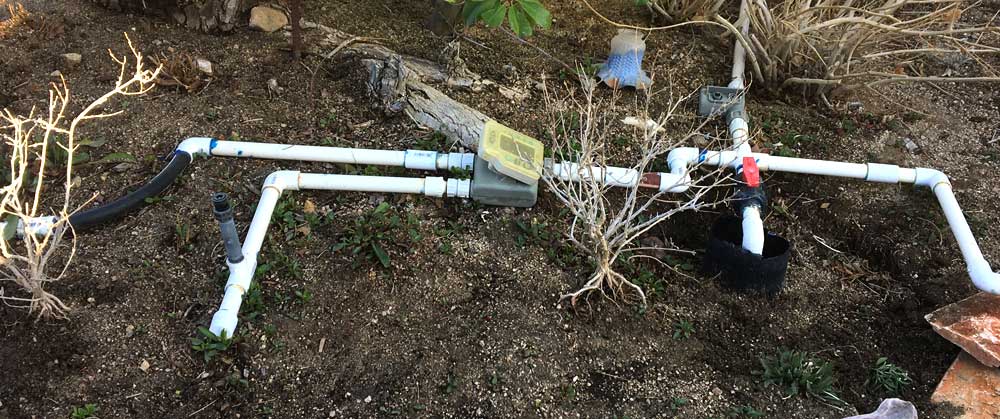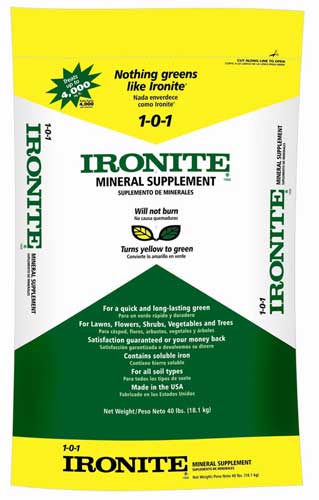Spring Chores – Third Steps
Your garden beds are really starting to take shape at this point and spring fever really starts setting in. There are a few more chores yet to complete before you can sit back with your drink of choice and enjoy the view.
#1 Test and Tweak Irrigation
If you have a system like mine that it is run on battery operated timers and you have removed those timers in the fall as I would recommend but rarely do myself – it is time to clean and test them.
All heads should be removed and cleaned as you will want to do periodically throughout the summer or when your system needs troubleshooting. It is amazing how in a theoretically closed system crud gets in those heads. Unscrew them and you will most likely seem some soil, fine grit and even small pieces of mulch. Just clean them out under your hose. If there is stubborn stuff use one of my favorite tools – the wooden skewer- to remove it. Replace the heads.
Turn on each zone at a time and check for areas of pipe that have come loose or cracked. Replace or reglue as necessary. You can find guidelines to working with PVC pipe in ….
If you had issues in the prior season and need to revise or add an irrigation zone now is the time to do so.

#2 Soil amendment
Desert soil contains virtually no organic matter. This we have amended with the addition of compost. It also has a high PH meaning it is very alkaline. High PH reduces the mineral nutrients that are available to plants. This too requires some amendment. Like compost your desert soil will not store up these amendments and ultimately turn organically rich or PH neutral.
Every spring I add Ironite to my beds. This lowers the PH of the soil and improves plants’ ability to absorb nutrients. I honestly do not get very technical with the process – I grab handfuls and sprinkle it evenly over all of my beds.

I use Ironite as a soil amendment for high PH in my gardens. There are other products that will do the same job. This was recommended to me years ago and seems to do the trick.
Fertilizing can be a bit tricky in the high desert garden. There are many drought tolerant perennials for our type of garden that not only do not care about fertilizer but actually will not tolerate it. Later in the season I will selectively spray plants with a Miracle Grow liquid feeder. However in the spring I find that adding some time released granular all purpose flower fertilizer gives my plants a spring boost. I always mean to do this again in the fall but usually forget. Like the Ironite – grab and handful and sprinkle it evenly throughout your beds.
#3 Mulching beds
I like to use a method for mulching that I have devised over the years. I call this “double mulching”.
When your plants, seeds and bare roots are planted, your irrigation ready to run and soil amendments sprinkled you apply the first layer of mulch. In this first application I use compost. The reason for this is twofold.
First the soil will eat up your compost – over time it leaches down into the sand and rock or adheres to the roots of plants. In the high desert garden you need to add compost on a regular basis.
The second reason I first mulch with compost is that it is early in the season and there may very well be perennials that have not yet shown their faces and/or seedlings and bulbs that either have not yet broken the surface or are just getting their first growth. At this point a layer of bark mulch would choke all of these out.
Apply a layer of compost around the base of all plants and in between them – 1 to 2″ deep. Apply it right up to the base of each plant, gently lifting it’s leaves out of the way if necessary. If you have bare areas where you plan to add new plants you can skip them until that is done. I grab a handful of compost and rub it between my hands – sifting it into the areas I want. Often you will see areas that need more than others and be especially kind to new plantings.
This is another time when you are micromanaging your beds. Spreading mulch with care requires you to get down there and really see what you are doing. You may find a few weeds that were missed or something coming up that you thought had been lost during the winter. It is also a good time to check on everything you planted or transplanted in the fall to make sure it is seated well. Sometimes I find something that I was either sloppy about planting or winter tried to purge the plant. Replant them now.
I like to let the compost water in and settle for a couple of weeks before the next layer goes on. I doubt there is any scientific evidence that supports this approach but it works for me.
After your compost layer has settled and somewhat watered itself in any slowpoke plants should be large enough to withstand a heavier mulch. Just as you did with the compost mulch add a layer of bark mulch. Whatever color or type you like is fine. Unlike with the compost you don’t need to sift the bark with your hands – ouch! And you will want a thicker layer – 2 to 4 inches is best.
Stand back and behold the transformation that has occurred! In my eyes there are few things more satisfying than a well mulched garden bed. Now you can grab your drink of choice, sit back and enjoy the view of a job well done!


0 Comments